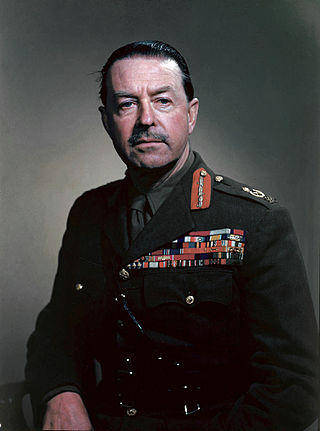
Field Marshal Harold Rupert Leofric George Alexander, 1st Earl Alexander of Tunis, was a senior and highly decorated British Army officer who served in both of the world wars. In addition, following the end of his military career, he served as Governor General of Canada and became the first Lord Lieutenant of Greater London in 1965.

Sir Frederick Arthur Montague Browning was a senior officer of the British Army who has been called the "father of the British airborne forces". He was also an Olympic bobsleigh competitor, and the husband of author Daphne du Maurier.
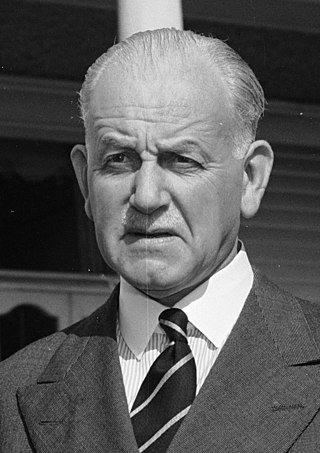
Lieutenant-General Charles Willoughby Moke Norrie, 1st Baron Norrie,, was a senior officer of the British Army who fought in both World Wars, following which he served terms as Governor of South Australia and the eighth Governor-General of New Zealand.

Lieutenant General Sir Henry Royds Pownall, was a senior British Army officer who held several command and staff positions during the Second World War. In particular, he was chief of staff to the British Expeditionary Force (BEF) in France and Belgium until the battle of France in May/June 1940. He was later chief of staff to General Sir Archibald Wavell until the fall of Singapore in February 1942, and was then chief of staff to Admiral Lord Louis Mountbatten in South East Asia in 1943–1944.

Major-General Sir Francis Wilfred "Freddie" de Guingand, was a British Army officer who served as Field Marshal Sir Bernard Montgomery's chief of staff from the Second Battle of El Alamein until the end of the Second World War. He played an important diplomatic role in sustaining relations between the notoriously difficult Montgomery and his peers and superiors.
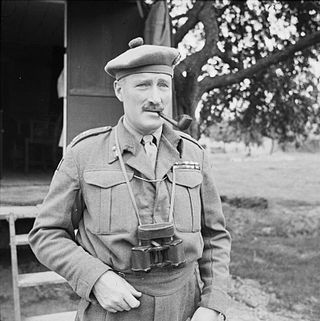
General Sir Neil Methuen Ritchie, was a British Army officer who served in the First and Second World Wars. During the Second World War he commanded the British Eighth Army in the North African campaign from November 1941 until he was dismissed in June 1942 after a disastrous defeat in the Battle of Gazala.

Field Marshal Sir Richard Amyatt Hull, was a senior British Army officer. He was the last Chief of the Imperial General Staff (CIGS), holding the post from 1961 to 1964, and the first Chief of the General Staff (CGS), holding that post until 1965, and, as such, was the professional head of the British Army. He later became Chief of the Defence Staff (CDS) from 1965 to 1967, the professional head of the entire British Armed Forces. He served with distinction during the Second World War, fighting from 1942 to 1945 in North Africa, Italy and Western Europe, became the youngest divisional commander in the British Army, and, after the war was over, he advised the British government on the response to the Indonesia–Malaysia confrontation in the 1960s.
Lieutenant General Noel Mackintosh Stuart Irwin, was a senior British Army officer, who played a prominent role in the British Army after the Dunkirk evacuation and in the Burma campaign during the Second World War. He was also instrumental in some reforms to the training and equipment of British soldiers after the defeat in France in 1940, intended to meet the demands of modern warfare.
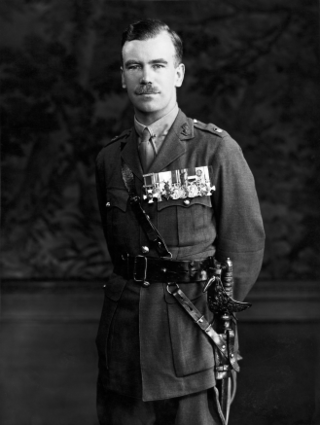
Brian Hubert Robertson, 1st Baron Robertson of Oakridge, was a senior British Army officer during the Second World War, who played an important role in the East African, North African and Italian Campaigns. After the war he was the Deputy Military Governor of Germany from 1945 to 1948, and then the Military Governor from 1948 to 1949.

Field Marshal Allan Francis Harding, 1st Baron Harding of Petherton,, known as John Harding, was a senior British Army officer who fought in both the First World War and the Second World War, served in the Malayan Emergency, and later advised the British government on the response to the Mau Mau Uprising. He also served as Chief of the Imperial General Staff (CIGS), the professional head of the British Army, and was Governor of Cyprus from 1955 to 1957 during the Cyprus Emergency. His administration of Cyprus was controversial for its authoritarian treatment of suspected insurgents and civilians.

Lieutenant General Sir Harold Rawdon Briggs, was a senior British Indian Army officer, active during the First World War, Second World War and the Malayan Emergency.

Lieutenant General Sir Dudley Russell KBE, CB, DSO, MC was a senior officer of both the British Army and the British Indian Army, and served during World War I and World War II, where he commanded the 8th Indian Infantry Division during the Italian Campaign from late 1943 until the end of the war in 1945.
Brigadier Charles Joseph Weld was an officer in the British Indian Army during World War I, the interwar years and World War II.
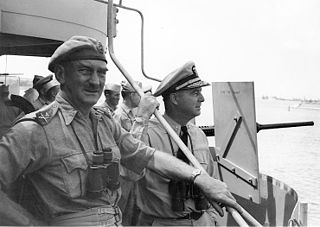
Lieutenant-General Sir John Ledlie Inglis Hawkesworth, was a senior British Army officer who served during both World Wars. During the Second World War he commanded the 4th Division during the Tunisian Campaign in early 1943, later commanding the 46th Division throughout most of the Italian Campaign and, finally, X Corps in Greece, before suffering from a fatal heart attack in June 1945.
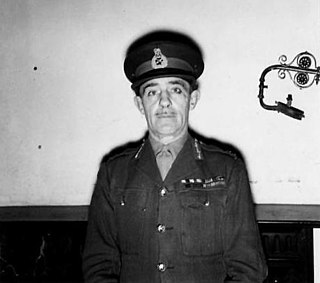
Major General Horatio Pettus Mackintosh Berney-Ficklin, was a British Army officer who served in both the First and Second World Wars. During the latter, he commanded for just over three years – from July 1940 until August 1943 – the 5th Infantry Division, the most widely travelled division of the British Army during the Second World War.

Major General Douglas Alexander Henry Graham, was a senior British Army officer who fought with distinction in both world wars. He is most notable during the Second World War for commanding the 153rd Brigade of the 51st (Highland) Division in North Africa from 1942 to 1943, later being the General Officer Commanding (GOC) of the 56th (London) Infantry Division during the Salerno landings in Italy in September 1943 and the 50th (Northumbrian) Infantry Division during the Normandy landings in France in June 1944.
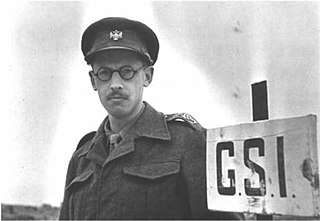
Brigadier Sir Edgar Trevor Williams was a British historian and army military intelligence officer who played a significant role in the Second Battle of El Alamein in the Second World War. He was one of the few officers who was privy to the Ultra secret, and he served on the staff of Field Marshal Sir Bernard Montgomery as his intelligence officer for the rest of the war.
Lieutenant-General Sir Alexander Galloway, was a senior British Army officer. During the Second World War, he was particularly highly regarded as a staff officer and, as such, had an influential role in the outcome of Operation Crusader during the Western Desert Campaign in late 1941. He later commanded the 4th Indian Infantry Division at the Battle of Monte Cassino during the Italian Campaign in early 1944.

General Sir Harold Edmund Franklyn, was a British Army officer who fought in both the First and the Second World Wars. He is most notable for his command of the 5th Infantry Division during the Battle of France in May/June 1940.
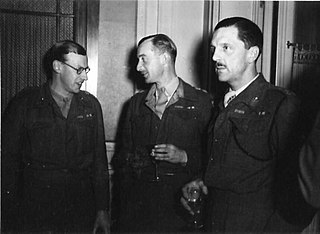
Ronald Frederick King "David" Belchem was a senior British Army officer who saw service in the Second World War.

















